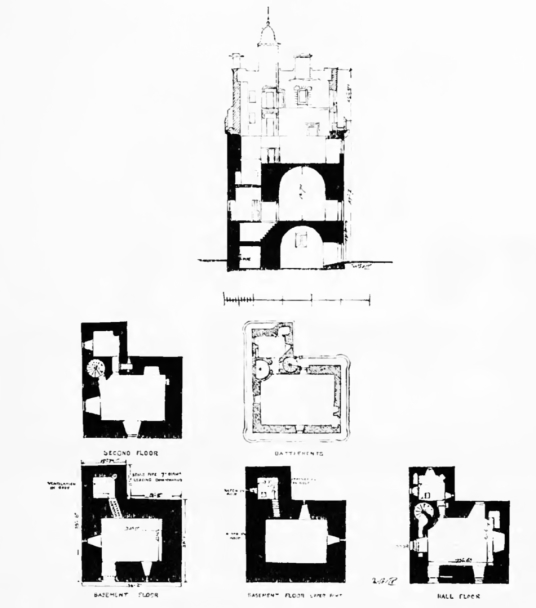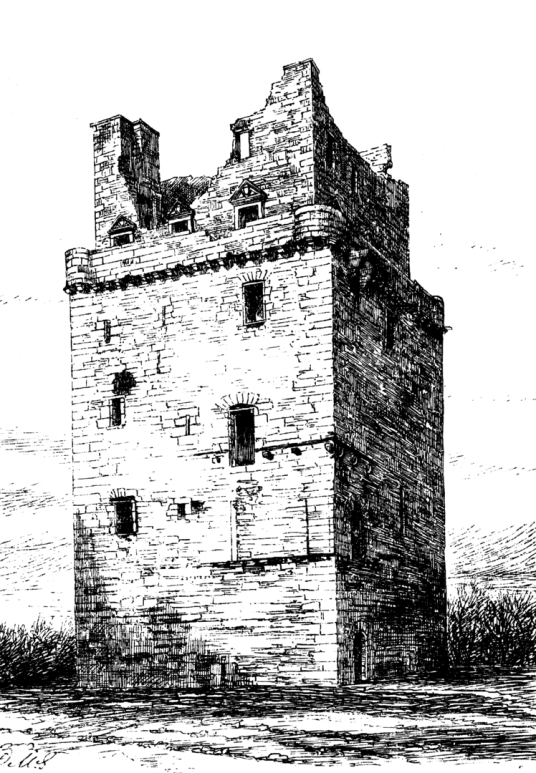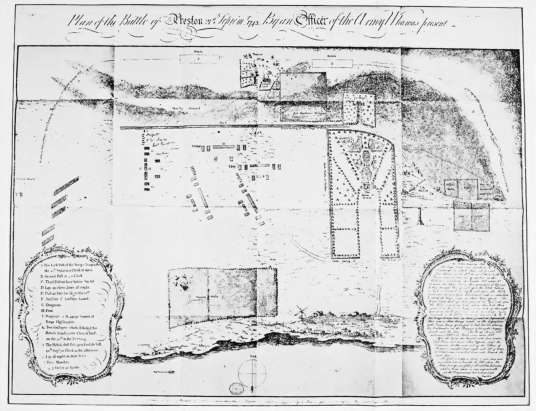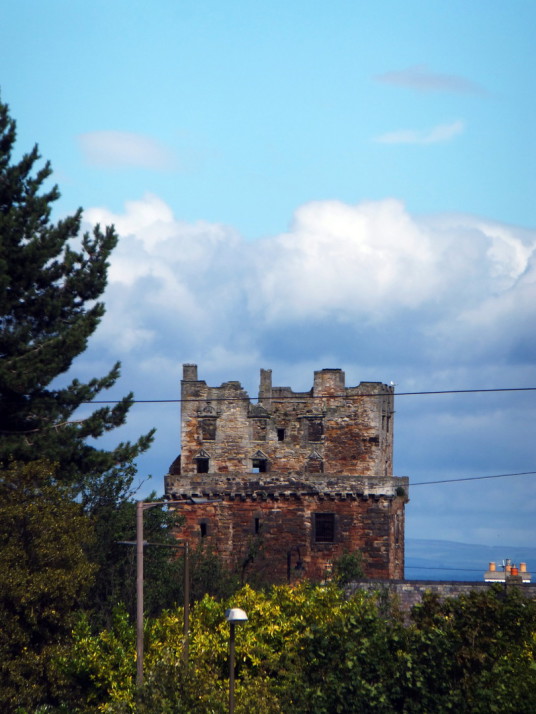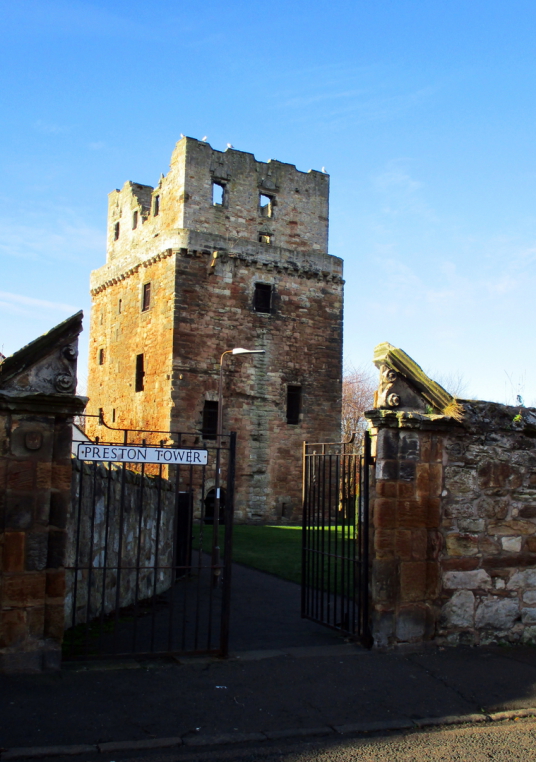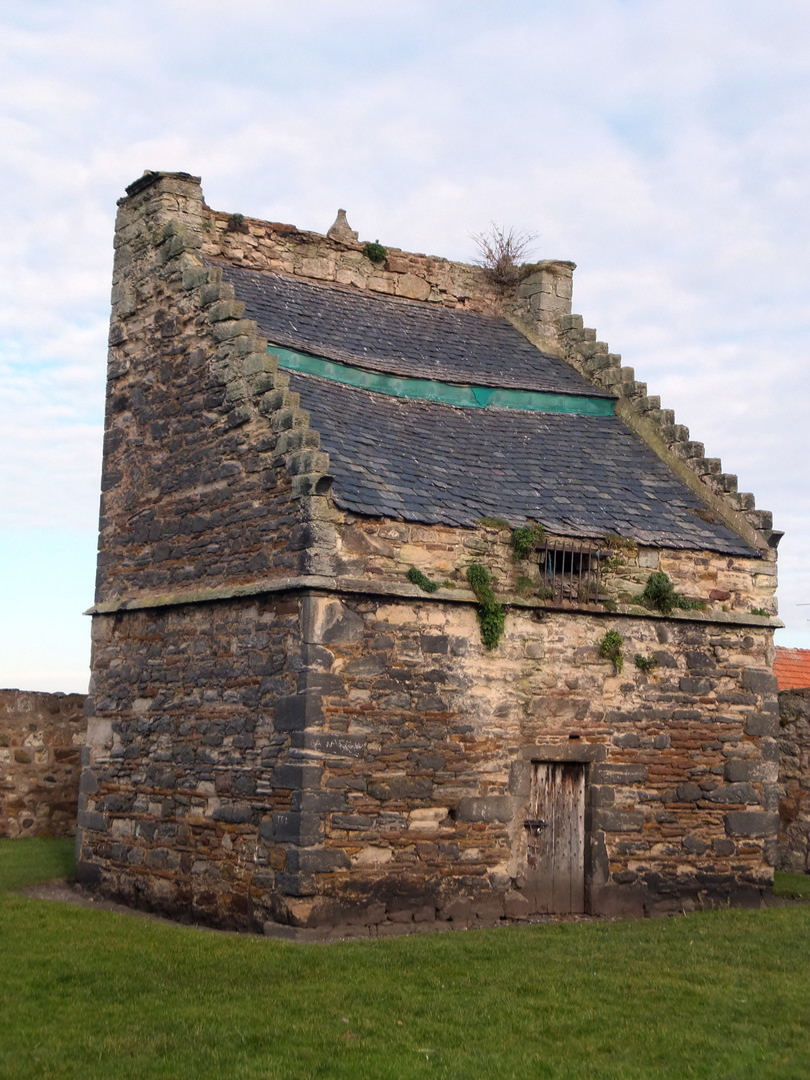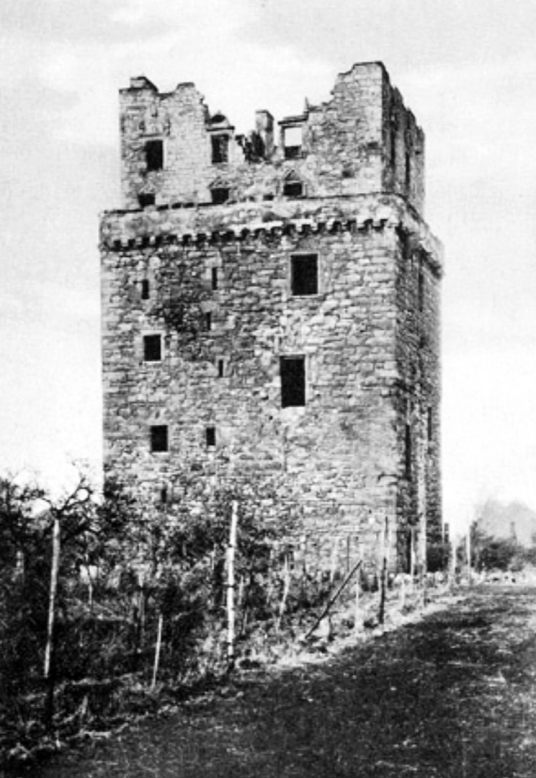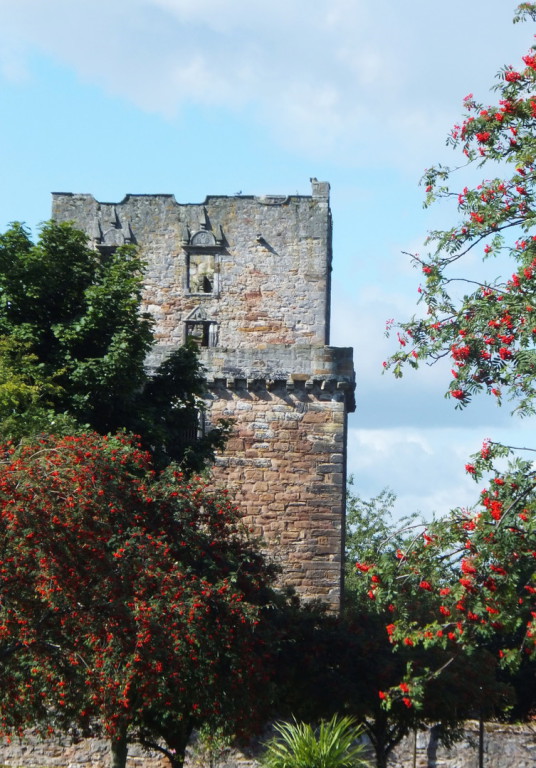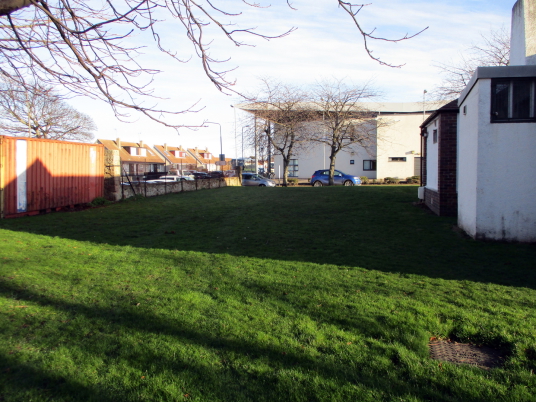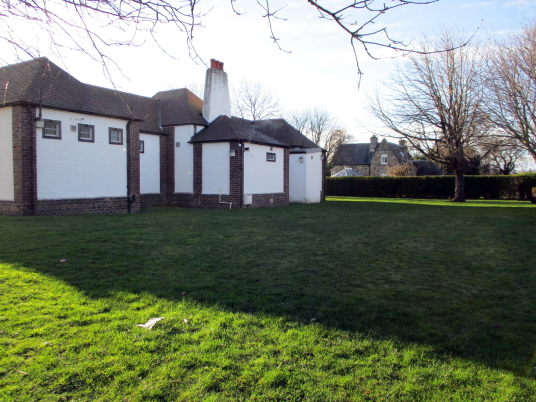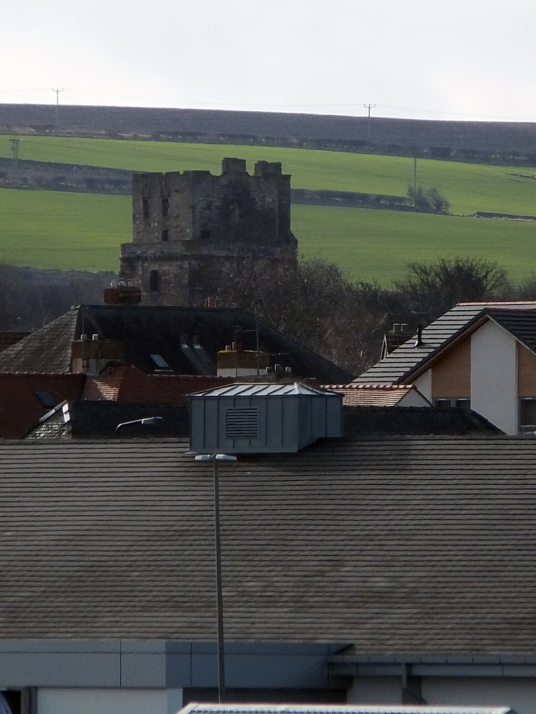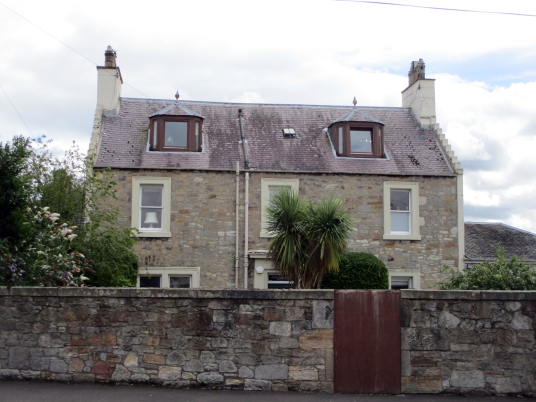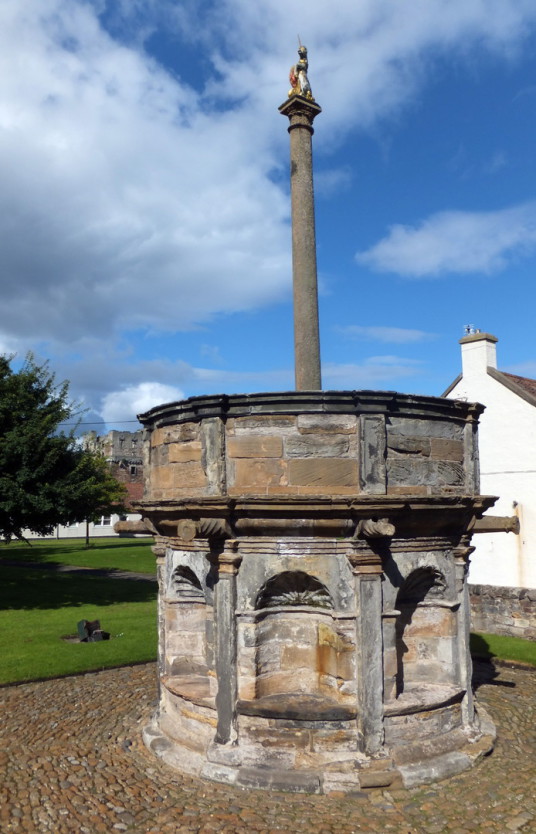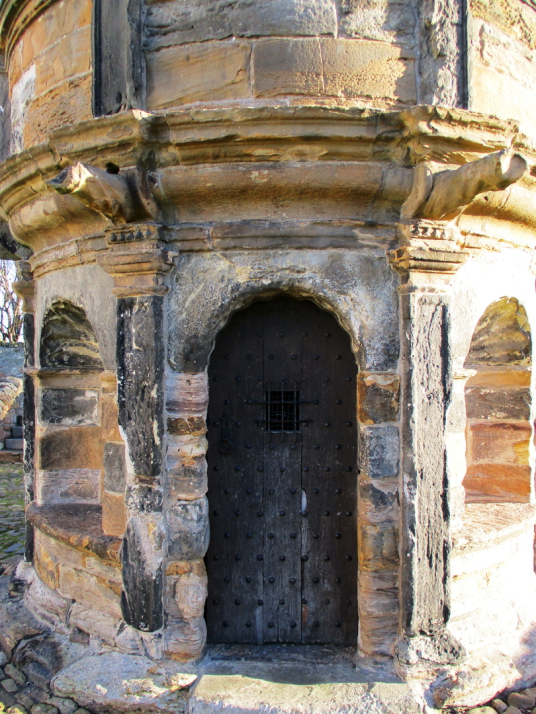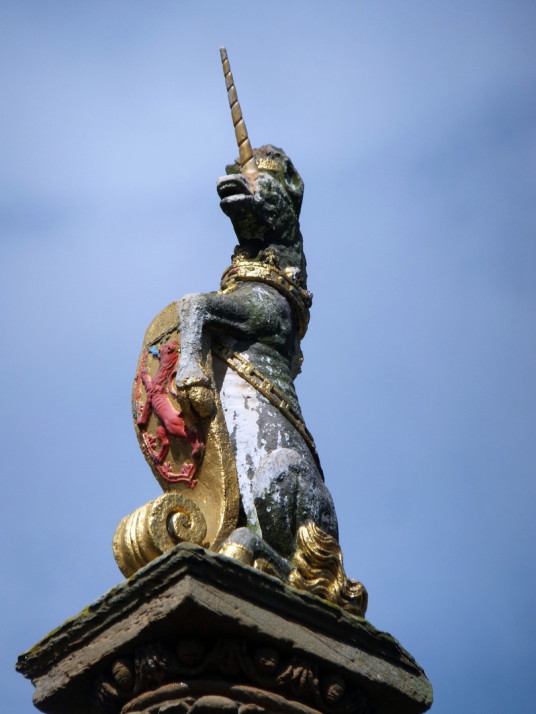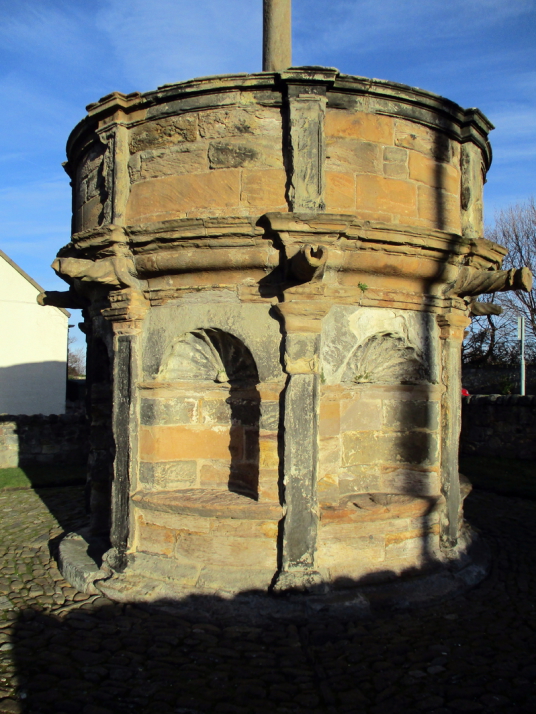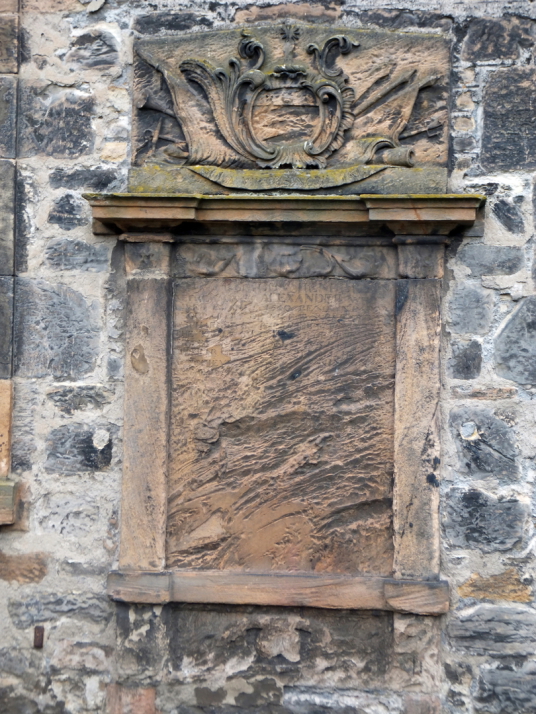Preston Tower
Lothians: South-east of Prestonpans, on minor road north of B1361 west of junction with A198, near Northfield House and Hamilton House, at Preston Tower.
NTS NT 393742 OS: 66 EH39 9NT
OPEN: Gardens open all year, daily dawn to dusk – tower: the tower may be viewed from the exterior.
Standing in fine gardens but a somewhat grim edifice, Preston Tower is a strong 15th-century L-plan tower of four storeys, although it may possibly incorporate work from the 14th century. Two further storeys were added in the 17th century, when an extension was also built. The corbelled-out parapet has open rounds at each of the corners. Outbuildings and the courtyard have gone.
The basement is vaulted, and near the entrance, which still has an iron yett, is a pit-prison. The entrance to the vaulted hall, on the first floor, could only be reached by an external stair. The hall has a large fireplace, and a mural chamber. A turnpike stair climbs to the upper floors, within the thickness of the walls, while another turnpike stair, in the re-entrant angle at parapet level, gave access to the ruinous 17th-century addition.
‘Preston’ is marked on Blaeu’s map of The Lothians, and then on Adair’s map of East Lothian. Preston House, depicted as a two-storey edifice in a walled park, is marked on a map drawn following the Battle of Prestonpans in 1745, although the tower is not marked.
There is an old lectern doocot [NT 390742], with 985 nesting boxes and dating from the 17th or 18th century.
Preston is said to have been a property of the Homes, but is recorded as being held by the Setons in the 13th century before passing to the Liddles. It went by marriage at the end of the 14th century to the Hamiltons of Rossavon, Fingalton and Preston, who probably built the tower. Preston was torched in 1544 by the Earl of Hertford, and then in October 1650 by Cromwell’s forces, when all the family papers were burnt.
In 1661 an act in favour of Sir Thomas Hamilton of Preston mentions the tower, fortalice and manor place of Preston. After being restored, the building was accidentally burnt again in 1663, then apparently abandoned for nearby Preston House [NT 392740].
Preston House had also been burned in 1650, and had been completely demolished by the 1930s. Preston House is marked on a map of the Battle of Prestonpans in 1745, although few others, when shown as a two-storey house of five bays. This may not be accurate as Bankton House is shown in the same style. Oddly, Preston Tower is not shown on the map. Although once a substantial house in landscaped grounds, nothing remains of the house or gardens except possibly parts of the boundary wall.
Description of Preston House, from Prestonpans and Vicinity by P. McNeill (1902)
The house, though in ruins now, was a two-storied building, constructed in the old Scotch baronial style. The whole building, from east to west, measures 142 feet. The main or front door is closed up, but quite a number of the finely rounded steps leading up to it are intact. There are a pair of beautiful circular pillars, one on each side of the door, with very fine fluted stonework behind them. Schaw’s, or some other coat of arms, is said to be emblazoned over the door, but heavy rods of ivy hold the mastery here, and whose they are remains a mystery. From the main door passages run east and west the whole length of the building, and there is a continuous passage from wing to wing in the lower flat of the building. A few of the lower windows are or have been iron-stanchioned, while several of the upper windows have been treated in a similar manner. The old kitchen is situated on the ground floor in the west wing, and a curious little place it is. It has four diminutive windows, two to the front and two to the back. The ceiling is low but strongly arched with stone. The floor has been laid with pavement, and that business has been meant with the fire is evident from the fact that the fireplace covers a space of nine feet, while a couple of iron hooks still retain a place in the ceiling, capable each of bearing aloft the dead weight of cither boar or bullock. There is a fine room, 18 by 15, over this, but the ivy is creeping in everywhere. At the extreme east end of the building is a very spacious and lightsome room. It contains a very small fireplace, four very large windows, and a monster of a door at the east end, fully three and a half feet wide by eleven feet in height. This is known as Dr Schaw's Library. A very large recess in the wall shows where his bookshelves had been, but not a single volume of old forgotten lore is to be found there now. Along the back or south of the house runs what is called the avenue. It is simply a continuation of what had evidently been a direct route eastward through the village of Preston in days that are no more. Opposite what remains of the south side of the ruins there remained until recently a large stone-paved court. It was bounded by the parapet wall still overlooking the garden southwards. Along this parapet wall still runs the original wood railing, with its great iron spikes which formerly went to embellish it. This wood railing was set up when the house was constructed, and it has now become so frail that but for the fruit trees Mr Wright planted against it many years ago it would hold its place no longer. Almost in a line with the old house runs a very high and time-worn wall. That this wall had been built many years antecedent to Preston House is evident, and from the door and window marks shown therein it is also evident that Preston village extended very much farther east at one time than many people now imagine; and it was only, we doubt not, when Preston House was built that this main highway through Preston village was unceremoniously stopped. Dr James Schaw enjoyed his new possessions for a very short time. He acquired the estate of Preston in 1780 and died in 1784. After his decease it was found he had bequeathed Preston House, in the first place, "to be fitted up for the maintenance and education of boys of poor but respectable parents." The age of admission from four to seven years; they might be retained till they were fourteen years of age; and preference was to be given to names in the order set down: Schaw, McNeill, Cunningham, and Stewart. When boys left the institution they were to be bound as apprentices to some sort of trade, or be disposed of otherwise according to the discretion of the trustees, and for the benefit of the youngsters. There were nineteen trustees, including the parish ministers of Tranent and Prestonpans, appointed to superintend the institution, and it was to be conducted by a governor and a matron. It was found that Dr Schaw had also bequeathed the whole of the lands and barony of Preston, together with the proceeds of other property, for the support of the establishment. His daughter's portion was also to revert to the funds of the Hospital in the event of her dying childless, which was the case, Mrs Sawers, his daughter, dying at Bath without issue. Schaw’s Hospital — Preston Old House — was first opened as an institution in the year 1789. At the opening, and for a considerable time after, its inmates numbered fifteen; but the building was afterwards suited to accommodate twenty-four. An official register gives 120 boys who passed through this institution; but there must have been a good many more.
One of the family was Robert Hamilton, who was a noted Covenanter and prominent in the battles of Drumclog and Bothwell Brig. The family were made baronets of Nova Scotia in 1673, forfeited in 1684, but recovered the property in the 19th century. The Hamiltons lost the property about 1700, after supporting Argyll's rebellion in 1685, and the estate went to the Oswalds, who were related. The property was heavily indebted and it was acquired by James Erskine, Lord Grange, best known for the disappearance of his wife, Rachel Chiesly, Lady Grange. Erskine may have been a Jacobite, but he remained at Preston House during the 1745 Rising to develop the gardens. Many government troops attacked by the Jacobites at the nearby battle of Prestonpans came to grief against the boundary wall of Preston House. In 1780 Preston House and part of the estate was acquired by Dr James Schaw and he lived here until his death at the house in 1784 and the house then became a hospital for poor children from good families. See above for a description of Preston House in 1902.
The tower was consolidated in 1936, purchased by The National Trust for Scotland in 1969, and is under the guardianship of the local council. It was repaired in 2004-5. The line of the
Stirling-Hamiltons of Preston, baronets, continues, but they now live in King’s Lynn in Norfolk in England.
The tower is reputed to have a ‘Green Lady’.
This is one of five old houses in Prestonpans, the others being Hamilton House, Northfield House and Harlawhill, as well as Athelstane Lodge.
Athelstane Lodge [NT 391739], a plain two-storey house with an attic and which stands to the west of the site of Preston House, dates from the late 17th century and has a fine interior, with 17th-century panelling, fireplaces and plasterwork. Some have suggested that these came from the demolished Preston House, but it is likely they are original to the house. The building has a turnpike stair.
The building was home to Sir Francis Grant, Lord Cullen, who was a lawyer and judge as a Lord of Session. He purchased Monymusk in Aberdeenshire, and he was the father of William Grant, Lord Prestongrange (see Prestongrange House). Sir Francis died in 1726 and is buried in Greyfriars Cemetery in Edinburgh. The house is said to be named from Lord Athelstane, another Lord of Session, but there is no information about such a person.
Preston Mercat Cross [NT 391740] is the only mercat (or market) cross on its original site. The round vaulted and windowless ground floor served as a prison, and a stair lead up to the roof, out of which the cross shaft rises and is surmounted by a painted unicorn of Scotland and the roof is enclosed by a parapet.
The monument dates from 1617 or earlier, when the Hamilton of Preston were given leave to hold weekly markets and an annual fair at the beginning of October, known as St Jeremond's (Jerome's) Fair in a writ of 1661. At the time the village of Preston was more important than Prestonpans, but over time this changed and the cross stands by the roadside in a grassy area by modern housing. Proclomations would have been read from the cross.
Preston Church, now known as Prestongrange Church (although with no connection to Prestongrange House) was built to replace a church burnt down by the English in 1544. The present building incorporates a tower dating from 1595 with other fragments, but mostly dates from 1774 with alterations in the 1890s. The church was built by the Minister John Davidson on lands given to him by the Hamiltons of Preston.
In the burial ground are many old carved memorials, and some of those killed at the Battle of Prestonpans are buried here. The church is used by the parish, and the name comes from when it was amalgamated with the Grange Church.


